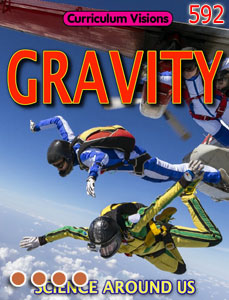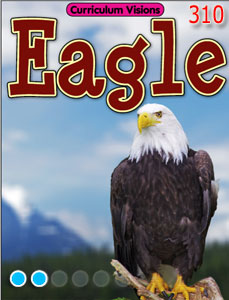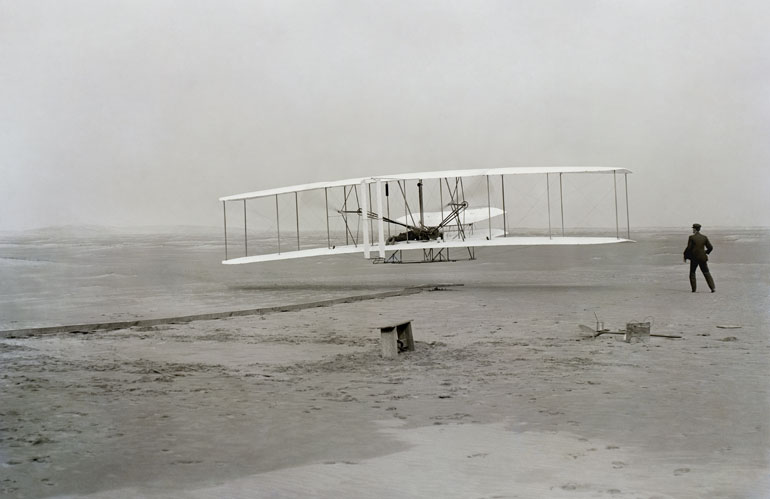When we see many things flying, such as insects, birds, bats, balloons, rockets and aircraft, we tend to take flight for granted. We might all think they move the same way. But they don't.
In fact it is very hard to fly. Throughout history, people have tried to fly and found they couldn't. So why was that?
The first thing to know is that there are two forces trying to stop anything flying. One is gravity, which tries to pull everything down to the ground, and the other is the air, which acts like a very thin kind of treacle to stop things moving about.
The simplest kind of flight is to work with natural forces: it is called falling. You go up somewhere high and let gravity carry you through the air to the ground. Parachutists, skydivers and paragliders all do this.
They get slowed down by the air. The air acts like a brake. It is friction at work. We call friction of the air 'air resistance'. The bigger the surface area you make the parachute, the slower you will fall because the air is holding you up.
The next thing you can do is to make yourself lighter than air. Hot air balloons do this. Balloons are a good example of buoyancy. Hot air is lighter than normal air, so it is less dense than normal air. Hot air balloons are now a very popular way of flying. They normally use air currents to carry them sideways.
If you fill a balloon with a very light gas, such as hydrogen, it will rise. The great airships were like this. They used balloons filled with hydrogen (which was risky because hydrogen catches fire easily). Nowadays we use helium. They are moved sideways by propellers worked from a small engine.
None of these ways of flying are as good as we would like. They are slow, cannot carry you over long distance or cannot support large weights. What we all want to do is to be birds or insects.
Insects have the toughest time. They have small wings compared to their size and so have to beat their wings very quickly. As a result they use an enormous amount of energy. But they are very manoeuvrable and can lift straight off the ground. When we build helicopters we are building mechanical insects, after a fashion.
But birds are much more economical in the flight. But they can't take off vertically (hummingbirds excepted).
So how do they work? What they do is to force air above and below the wings. If you get this right, then there is more pressure under the wing than above it, and the wing (and body attached to it) rises. This is called lift. Wings are nowhere near as simple as just flat boards. And aircraft don't fly with their wings level, either. I wonder if you have ever noticed that? So powered flight, by birds or aircraft, is about using some kind of motor to push you through the air fast enough for this lift effect to start to work. That is why aircraft need long runways.
The bigger the wings, and the lower the weight, the less force is needed to get lift. That is what you will see with the experimental solar aircraft. They just have a small engine to move them forwards, so they need all the lift they can get.
Gliders use lift in another way. The air has rising currents in it which also give lift. They are called thermals. But gliders need another aircraft to pull them off the ground in the first place.
PS. Ever wondered why racing cars have wing-type blades (spoilers) on top? Because they go so fast, they behave like an aircraft wing and tend to rise off the ground. That, of course, would be dangerous. The lift is so great is overcomes the weight of the racing car. In this case the 'spoilers' are designed to act like wings in reverse, pushing the car back onto the ground. Spoilers are also built into aircraft wings. We call them 'flaps'. When it is time to land, the flaps are pushed out of the wing to upset the normal wind pattern and stop lift. A plane could not control the way it lands without them!









